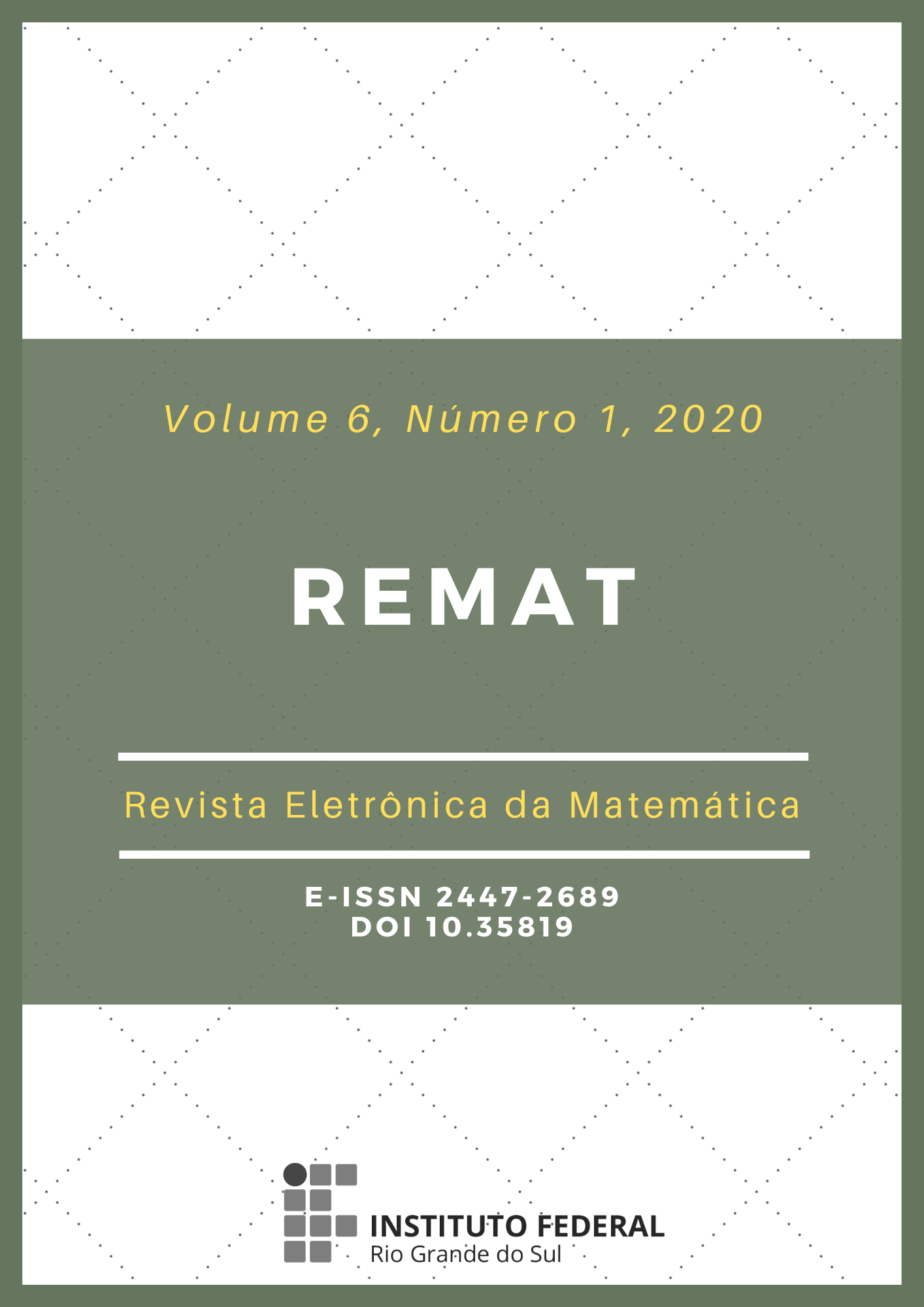Learning assessment in Mathematics classes: interconnected perspectives on the profile of Undergraduate Mathematics courses at public universities in Pernambuco
DOI:
https://doi.org/10.35819/remat2020v6i1id3851Keywords:
Assessment in Mathematics, Initial Training of Teachers, Innovative Assessment PracticesAbstract
This study discusses the impacts of theoretical reflections, in the Mathematics Degree courses in the state of Pernambuco, about the assessment in Mathematics classes and aims to identify what representations the undergraduate students have regarding the concepts and purposes of this topic. The debate we propose is the result of an investigation that was carried out at the Research Laboratory of Learning, Research and Teaching (LACAPE - UFRPE/CNPq), in 2019/2. The steps of the theoretical-methodological procedure are: review of the literature, analysis of official documents, analysis of the menus of the Mathematics Degree courses and application of a questionnaire with thirty undergraduate students from three public universities. We take as a basis for exploratory work the principles of qualitative research, according to which we organize the collected data, presenting them in the form of diagrams, tables and graphs, and then scrutinizing our perceptions. For data analysis, we performed the content analysis modality in the light of the Social Representations Theory and narrative research, in order to interpret the testimonies of the participants. Based on the results obtained, we observe that one of the institutions does not have any specific compulsory subject that directly covers how the assessment in Mathematics occurs or should be worked yet. We also found that the concept of assessment varies according to the profile of each undergraduate student. This article accentuates the need to bring discussions on this topic still in the initial formation, so that Mathematics teachers can envision heterogeneous and innovative ways of assessing.
Downloads
Downloads
Published
Issue
Section
License
REMAT retains the copyright of published articles, having the right to first publication of the work, mention of first publication in the journal in other published media and distribution of parts or of the work as a whole in order to promote the magazine.
This is an open access journal, which means that all content is available free of charge, at no cost to the user or his institution. Users are permitted to read, download, copy, distribute, print, search or link the full texts of the articles, or use them for any other legal purpose, without requesting prior permission from the magazine or the author. This statement is in accordance with the BOAI definition of open access.













 https://orcid.org/0000-0002-0893-7426
https://orcid.org/0000-0002-0893-7426


















